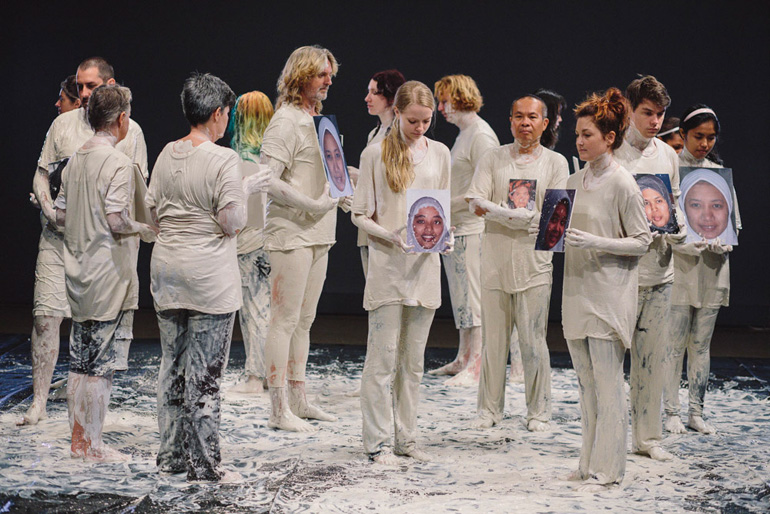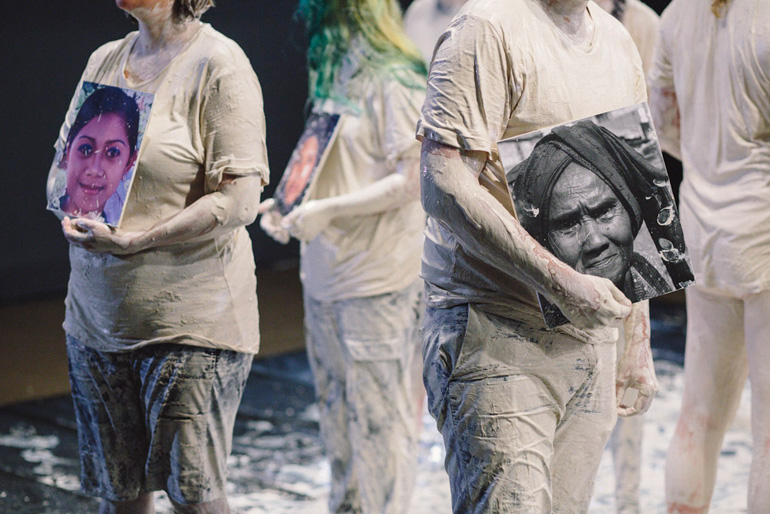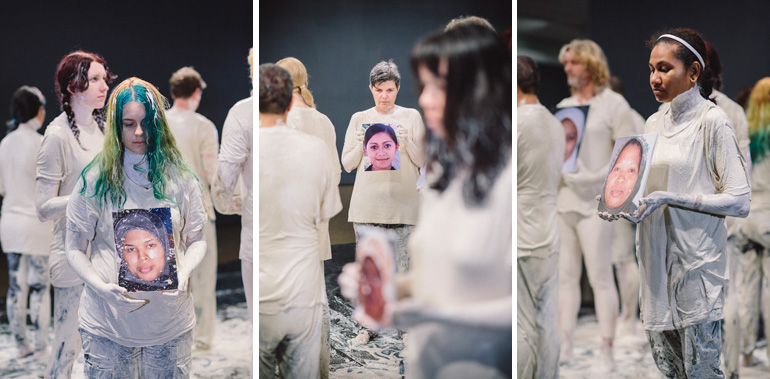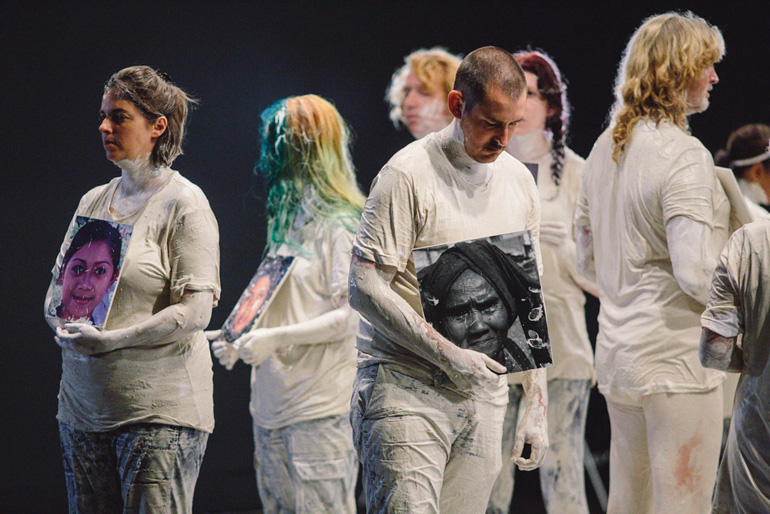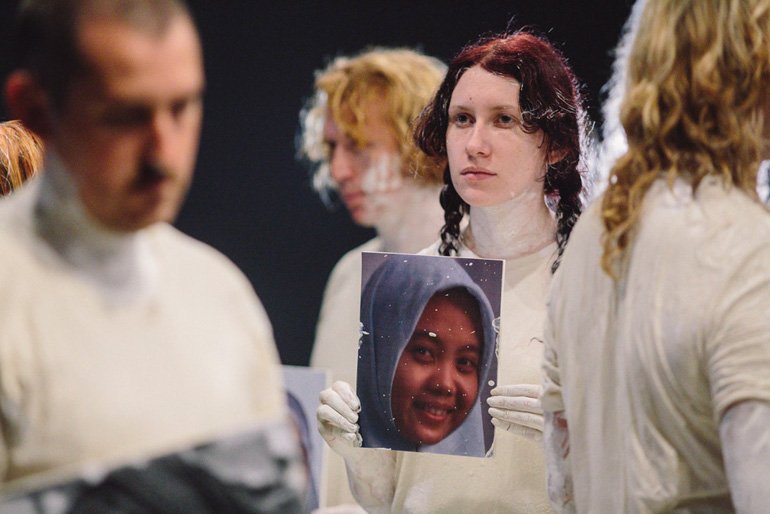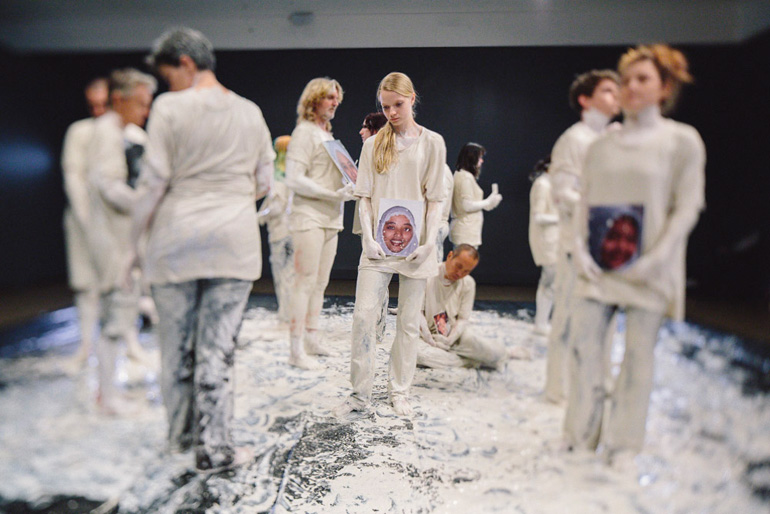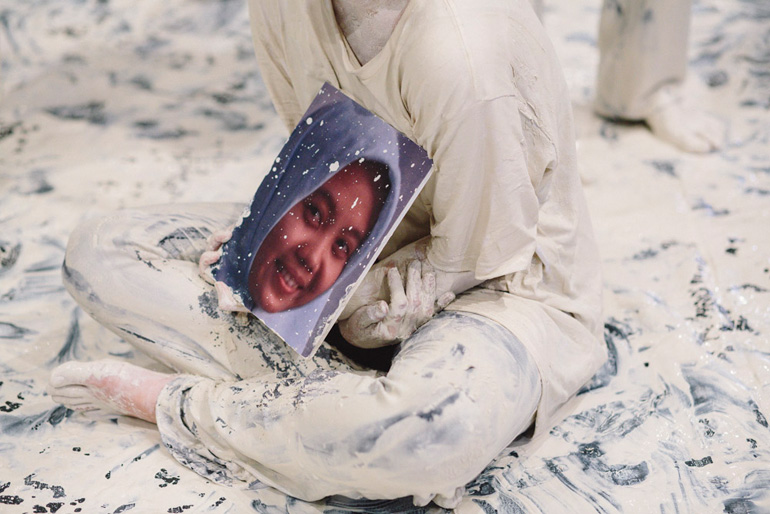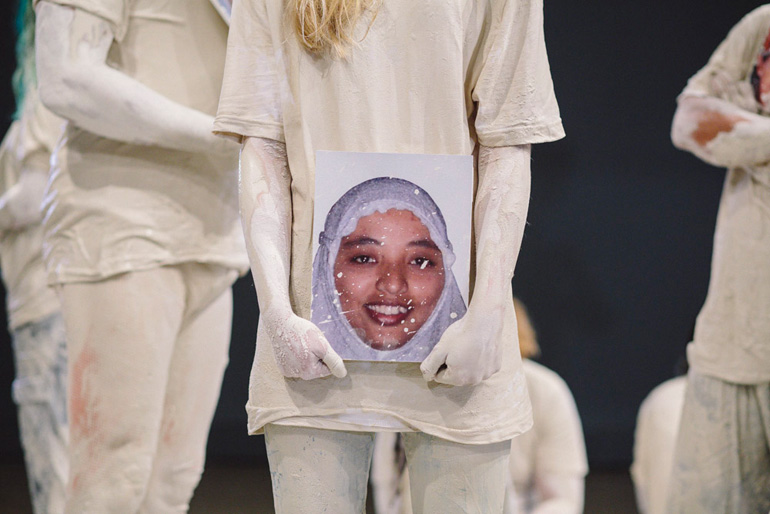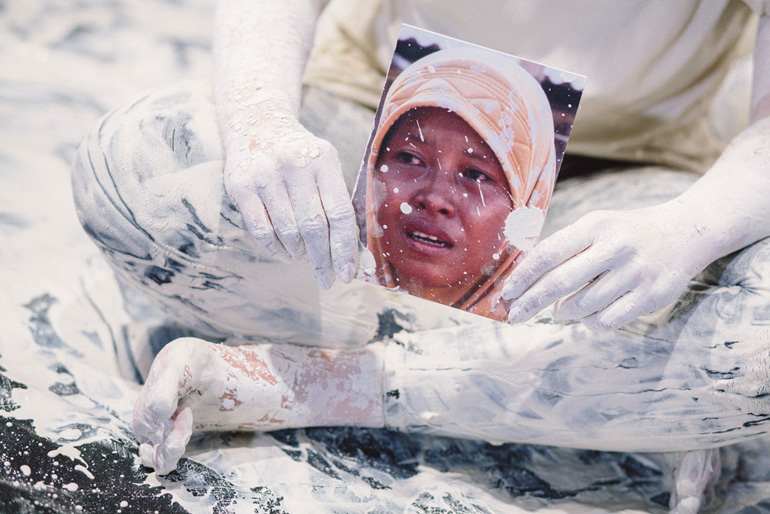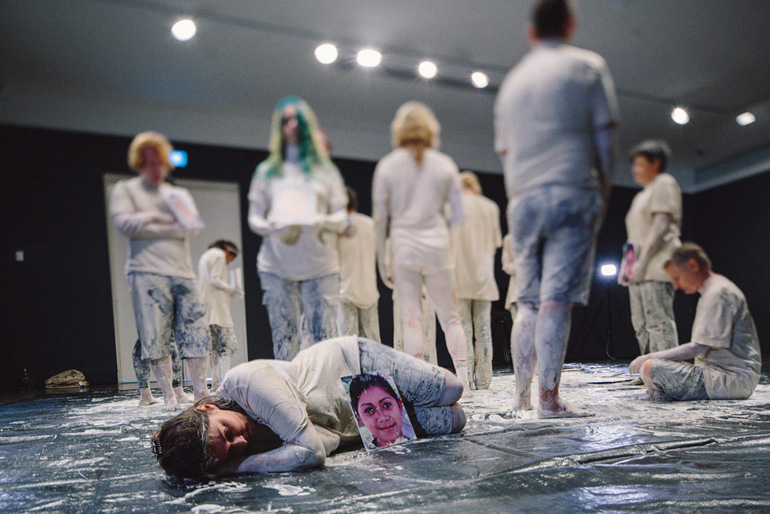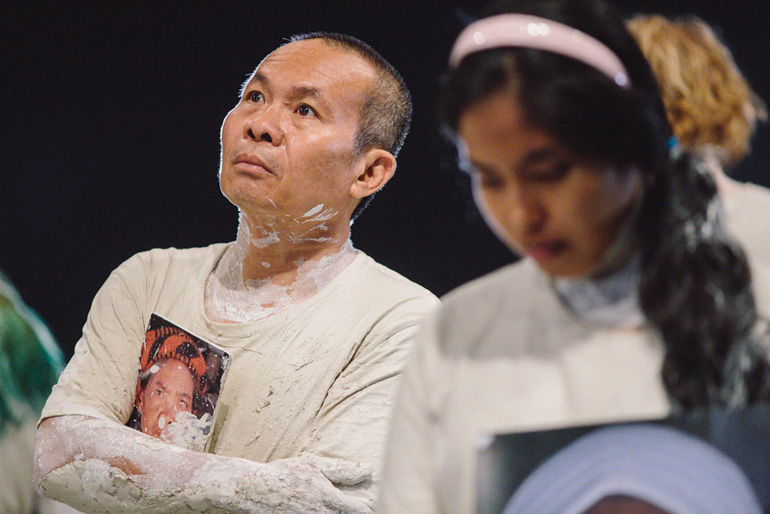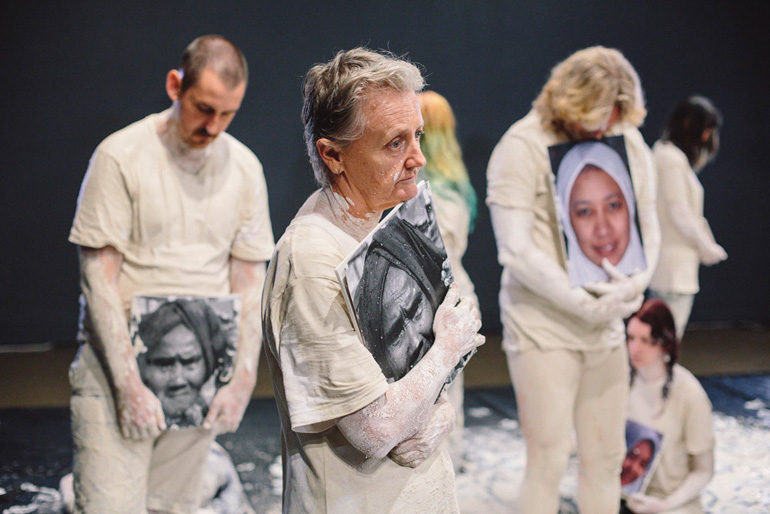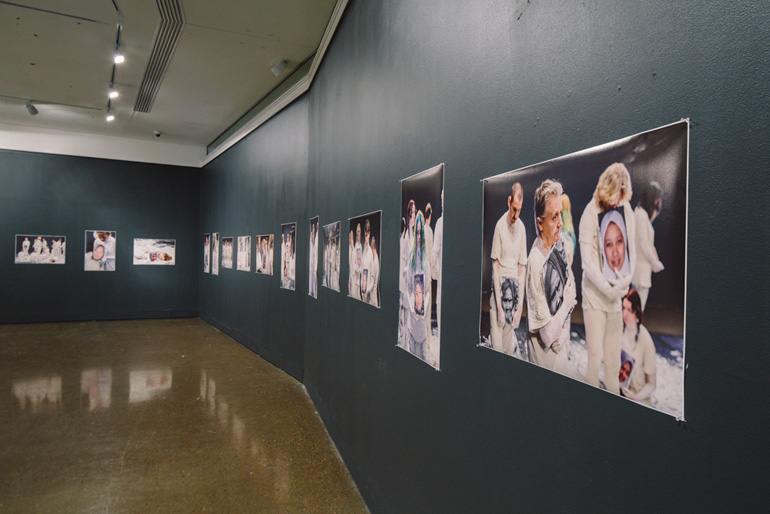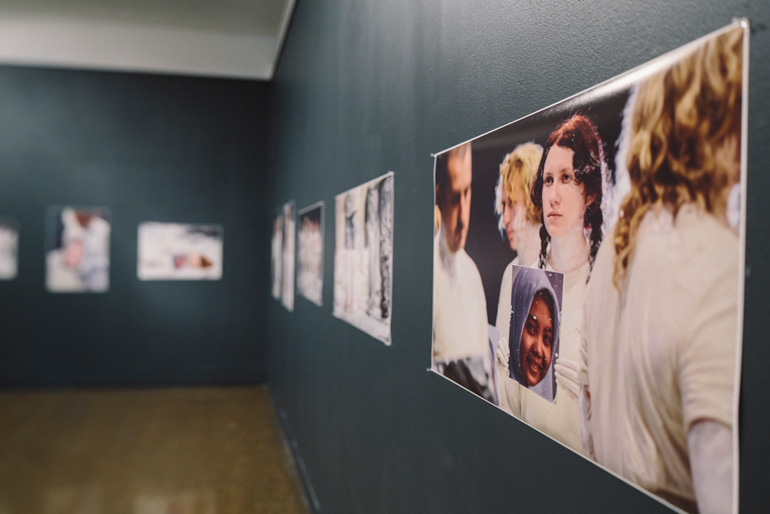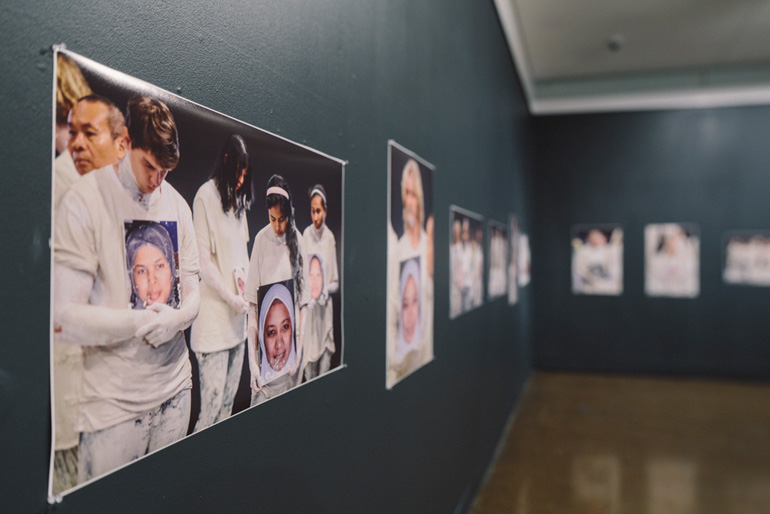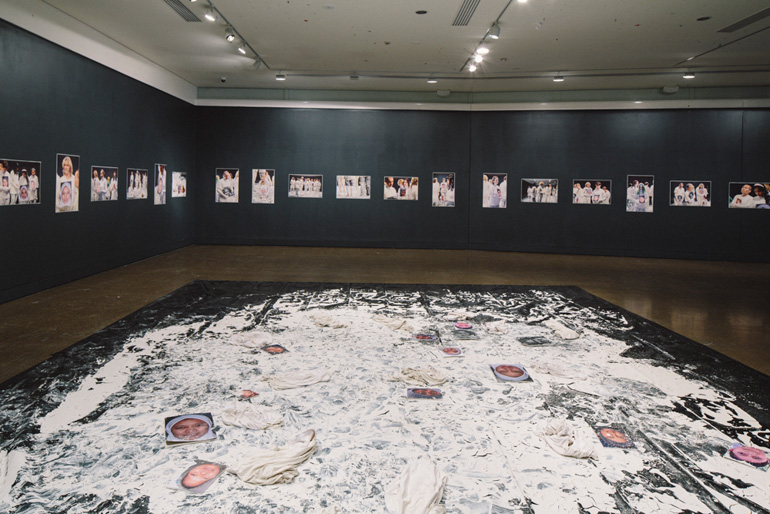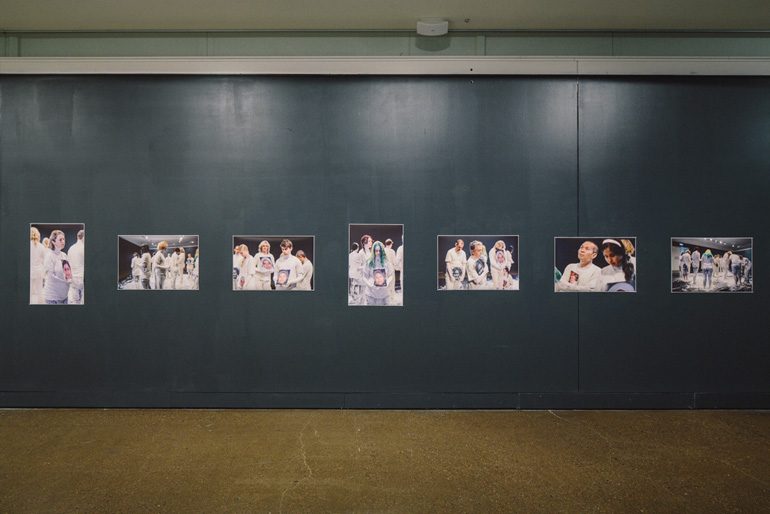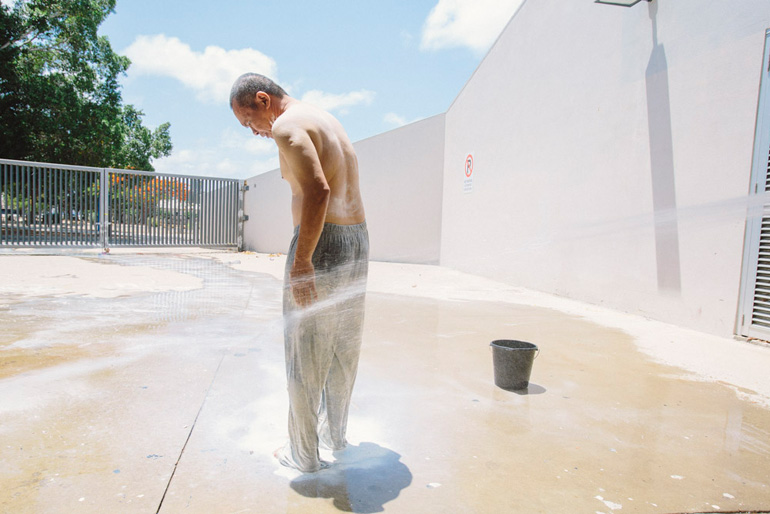Survivor
I felt honoured to be asked by Gallery Services in Townsville to photograph Dadang Christanto's amazing performance art work "Survivor". It was an incredible experience watching the volunteers stand virtually motionless for two hours. My images were then printed and displayed on the walls of Pinnacles Gallery.
Survivor is a major performance piece by Dadang Christanto, which had its Australian premier in Sydney at 4A Centre for Contemporary Asian Art (4A). The work illustrates the impact of human disaster, with particular reference to the tragic man-made mud catastrophe in the Sidoarjo region of East Java. Volunteers silently occupy the gallery space, covered in mud from the neck down whilst holding photographic portraits of individuals who disappeared as a result of the disaster.
In 2006, hot volcanic mud started erupting from the site of a gas exploration well. To date, 11 villages in East Java have been effectively wiped out. Christanto's interest in this disaster relates to his previous work about his father's disappearance during the Suharto regime in the mid-1960s. In the context of the mud disaster, the unrelenting build up of mud in the region is slowly consuming surrounding villages. As 4A's Director, Aaron Seeto, explains, "The entire history of a village - its livelihood and future is being buried under the mud. While Christanto's work is politically confronting, it is also a poetic experience that reminds us of human fragility and erasure in the face of disaster."
Dadang Christanto was born in 1957 in Tegal, Central Java and studied painting in Yogyakarta. Over the past decade his work has gained recognition across Australia with solo exhibitions at the Art Gallery of New South Wales and Sherman Galleries in Sydney, and at the Museum and Art Gallery Northern Territory. Christanto has been included in two Asia-Pacific Triennials at the Queensland Art Gallery, Brisbane and exhibited in key contemporary Asian art museums in the Asian region in Fukuoka Museum of Modern Art; Museum of Contemporary Art, Tokyo; Kwangju Biennale (2000), and the Venice Biennale (2003). In 1997, in recognition of his long-term artistic achievement, he was a recipient of a Pollock-Krasner Foundation Grant.
